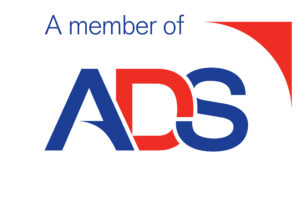In part 1 of our 2-part series, we explore how understanding the different variables that constitute a foreign Country’s culture will help assist business success. It’s not about where business is done so much as it is about how it’s done!
Two critical factors that can impact on doing business in a foreign country are:
- Corporate Culture Encompasses the dominant ideologies of the company. It can be defined as a pattern of shared attitudes, beliefs, assumptions and expectations. They probably have not been written down or stated but will shape the way people behave and interact with a company and underpin the way things get done.
- Local Culture This is learned and absorbed during the earliest stages of childhood, reinforced by literature, history, religion, education and parents. It affects the way events are perceived, judged, responses and their interpretation, and also spoken and unspoken communication between people.
Mastering the paradox of Corporate Culture vs Local Culture is essential.
Aspects of corporate standardisation, values and branding by necessity, should remain the same. These values should not be negotiable.
Some challenges in “going global” for example:
Performance Management
- 360-Degree Performance Plans can generate adverse reactions from companies in the Far East; they would never appraise their managers or anyone at a higher level than them.
- Pay for Performance – Also across the Far East, managers don’t feel comfortable talking to employees about performance issues and tend to give employees the same ratings. For example, in Korea, appraisals and salaries traditionally have been dependent on seniority and age, not performance.
- Europeans see performance appraisals as a forward-looking tool for the purpose of development.
- Americans view performance appraisals as a tool for reviewing past performance for determining salary rises and as legal documentation in the event of a future requirement to terminate an employee.
Work-Life Balance
- Ergonomic Assessments – Are preferred In Scandinavia, in Taiwan annual physical exams are the practice.
- Telecommuting – Living space is confined in Hong Kong and Japan. Therefore telecommuting is not viewed as a benefit.
- Employee Assistance Programs – Are not considered as useful in Asian countries. For example, emotional problems are never discussed even with family, much less with strangers, in Japan.
Learning and Development
Training programs across different countries can be the same, but consideration needs to be given to actual delivery methods.
- Asian cultures are uncomfortable with experiential exercises – they prefer a lecture approach.
- Italians and Latin Americans like to debate, discuss and can be extremely vocal. More time than usual may be required for a training session.
- Scandinavians tend to be no-nonsense, they crave facts.
A reliance on how business is conducted at home when going abroad is not going to result in success. Every country has a set of different variables the most important consideration is the difference in culture. As we said in the introduction, it’s not about where business is done so much as it is about how it’s done!
Two different cultures can have a lot of similarities and some apparent differences. The similarities vary for different countries. Typically, companies attempt to expand into countries which have more similarities and fewer differences in culture in order to avoid cultural mismatch.
Cultural distance will have an adverse effect on a company and create reputational damage. A cultural gaffe can lose customers and revenue; furthermore, worse case scenarios can be problems through pressure groups even public outrage. Cultural mistakes offend people and can also result in lawsuits.
When a company moves into a region with a different culture some of the obstacles that are to be faced are: different language, norms and beliefs, tastes and preferences etc., should the company not align itself with the prevailing local culture it will not reap the benefits of expansion.
In terms of expansion method, the most beneficial is to acquire or partner with local firms in order to understand the culture from on-going operations rather than setting up entirely new companies. The latter, however, is still preferred.
Marketing
Marketing that is culturally incompatible will create reputational damage for a company.
Managers who do not understand the other culture have a high probability of failure in the case of operating in different cultures.
Strategies for managing cultural diversity
Useful strategies for managing cultural diversity are as follows:
- Recognize Diversity: Identify and map the various national cultures and ethnic groups within the company and use this to understand which elements of consistency and standardisation can or should be promoted.
- Build on Diversity Issues: Create recruitment HR planning, strategy, location decisions, alliances, and partnerships. This helps avoid clashes and inefficiency and supports cultural awareness.
- Identify: Where and to what level local partners and employees should be encouraged or empowered to take the lead in expressing and managing diversity. Some degree of devolution of responsibility away from the centre of the company allows local divisions to identify aspects of diversity that are most important to them and their operations.
- Encourage: Cross-border discussion and interaction as well as focused training. Include specific kinds/combinations of international experience for fast-track managers.
- Aim: For a cultural balance in particular areas of strategic and tactical decision making (such as brand changes for foreign markets). Ensure a (numerically) balanced pool of managers or appropriately diverse inputs into decision making.
- Lead from the top: It should be an aim to match the geographic diversity of the company’s businesses with a senior management team of mixed cultures.
Managers can use the following approaches to organisational culture in supporting the senior management team:
- It is essential that the company’s mission is in accordance with the values that articulate the company’s direction.
- Perform workshops that empower the team to “buy into” the new values and behaviours and their practice.
- Carry out education and training programmes to help employees to acquire new knowledge and abilities.
- Institute performance management processes that ensure an objective performance appraisal aligned to the values, the standards and the behaviour developed by the culture change. Thus ensuring that they are taken in and practised as a component of the management process.
- Recognise and reward employees for a specific type of behaviour, in complete accordance with the values elaborated by the programme of organisational culture change.
Management techniques of this type can be used not only to alter but also to rejuvenate a culture.
Core components of culture
The core components of culture are language, religion, values, attitudes, customs, and norms of a group.
Language is probably the most important in understanding the culture and the values, beliefs, attitudes, and opinions of a particular individual or group. English is often the business language of most companies. An English-speaking capability can be a criterion for promotion. Nevertheless, do not assume that speaking the same language eliminates differences in culture, often it hides them. Furthermore, a reliance on English by managers whose mother tongue it is, combined with a lack of other language skills, can place a barrier to empathising with different cultures.
Religion can also influence business culture through a set of shared values.
In Part 2 of this 2-part series, the need to understand how business is done in the Middle East is covered, as norms and practices vary significantly from a European perspective.
Barry ET Harris MBE is a consultant for Proelium Law LLP. He is also a British Army veteran who combines operational experience with extensive commercial consulting, executive, and management expertise gained in complex environments and high-risk jurisdictions worldwide.
Need advice?
Contact us to discuss your requirements and how we can help







